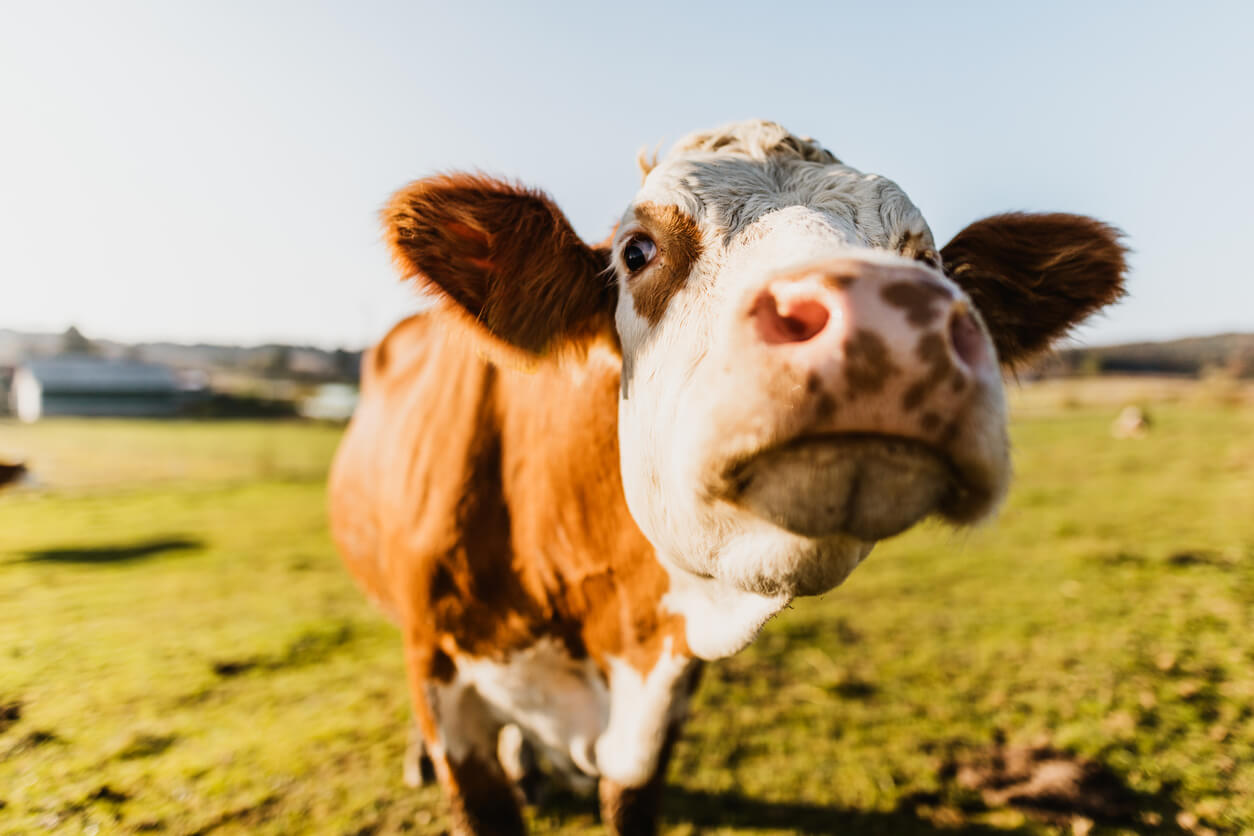In the battle of kosher beef vs. non-kosher, scientists may have declared a winner
Researchers in Poland compared attributes like color and tenderness to settle the age-old question of which meat tastes better

Does kosher cow taste better than non-kosher? Polish scientists believe they’ve found an answer. Photo by SimonSkafar/iStock
It’s the question that has haunted Jews since the first steakhouse hired a mashgiach: What’s tastier, kosher or non-kosher beef? Now, a team of Polish researchers may have given us a definitive answer.
In a pair of papers published over the past year, the researchers from the University of Rzeszow have outlined how kosher beef stacks up in a variety of metrics, ranging from chewiness and juiciness to color and chemical properties.
In one of the papers, published in the January edition of the Journal of Environmental Research and Public Health, the team looked at 80 cows: 20 male and 20 female killed according to kosher custom, and the same number of each killed in a non-kosher way.
Only cuts of meat that are considered kosher were used for the study.
Some of the cows involved were slaughtered according to the rules of kashrut: They were not stunned or unconscious at the time of slaughter, the blood was drained before the meat was soaked in water, salted and then rinsed three times.
They found that the kosher meat was darker and therefore less desirable according to what the average shopper wants, despite color and quality not being correlated. They also found that kosher beef had lower levels of adhesiveness, gumminess and chewiness.
“Hence, for a consumer who is not a religious Jew, koshered beef might not be an appealing product,” the authors wrote.
But on the flip side, the kosher beef fared better for some highly desirable attributes: the meat was more tender, juicy and palatable.
In another paper, published in the January 2022 edition of the journal Foods, Zurek and her team analyzed the chemical composition of kosher and non-kosher beef. In that paper, they theorized that the salt involved in the koshering process can affect the muscle’s pigmentation. For that paper, they analyzed the water, protein, fat and collagen contents of the meat, as well as that of various minerals.
“Stress during slaughter leads to a decrease in muscle glycogen levels, which in turn results in dark and dry meat,” Jagoda Zurek, a professor at the University of Rzeszow, and co-author of the study told the Forward, adding that female cows tend to have a calmer temperament than bulls, resulting in less stress during the slaughtering process.
That reduction in glycogen, a form of glucose, triggers a chain reaction that raises the acidity of the meat, affecting the color, taste and tenderness. Since the koshering process doesn’t allow for stunning the animal before it’s slaughtered (a fact that has made the koshering process controversial and even illegal in some parts of Europe), kosher meat tends to be more acidic.
While the rules of kosher slaughter are laid out in the Torah, Zurek said she was inspired to conduct the studies due to a relative dearth of academic research into the actual properties of kosher meat. Poland has become a big producer of kosher beef for the European market, although the future of that industry is in doubt due to new regulations.
The study did not address the quality of a new kind of kosher meat: muscle matter grown in a lab. In January, Israel’s head rabbi deemed that meat grown in a petri dish, not on a farm, is kosher.
















